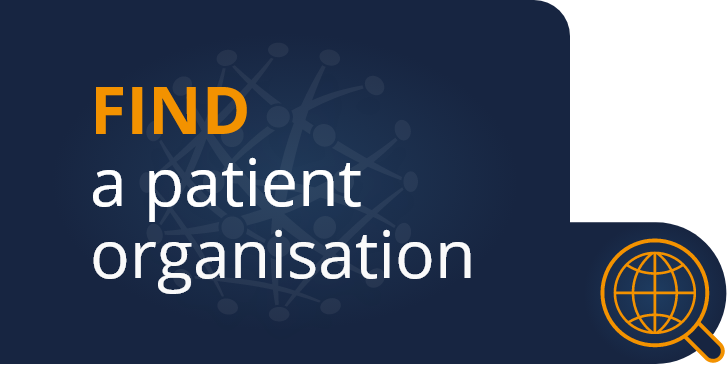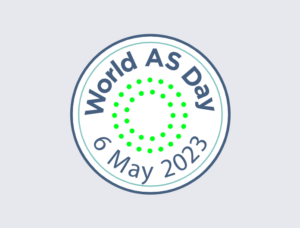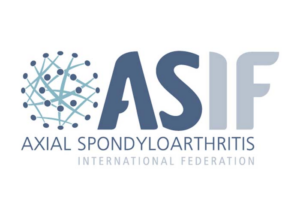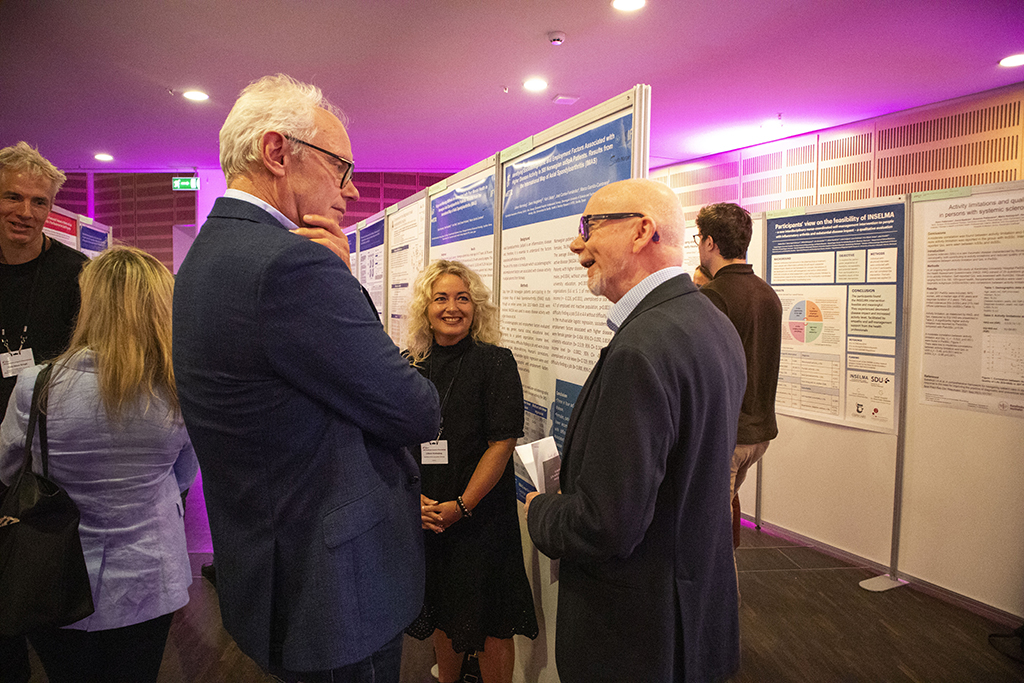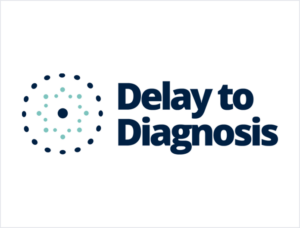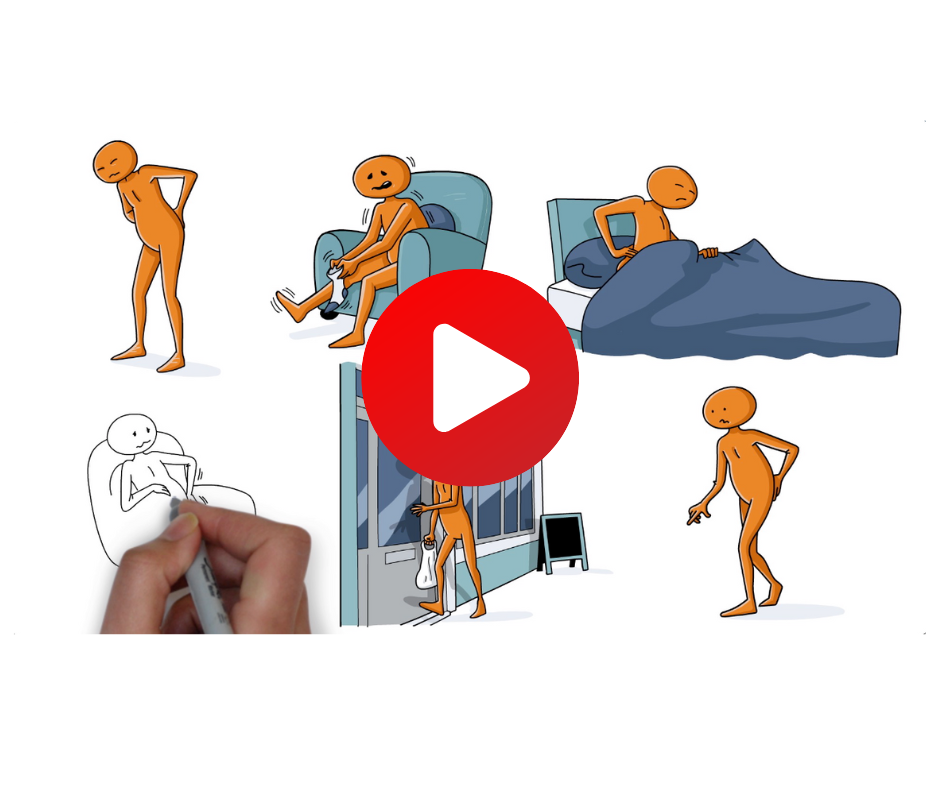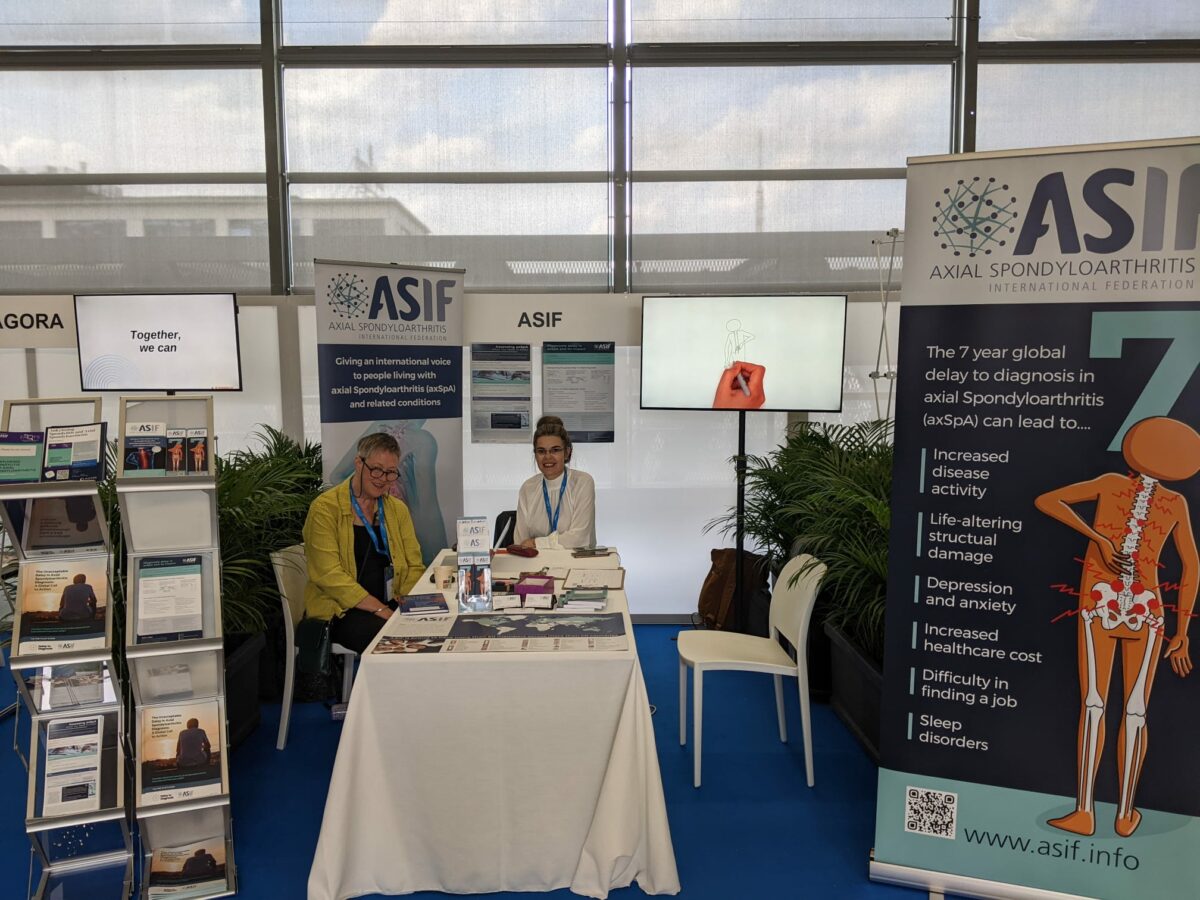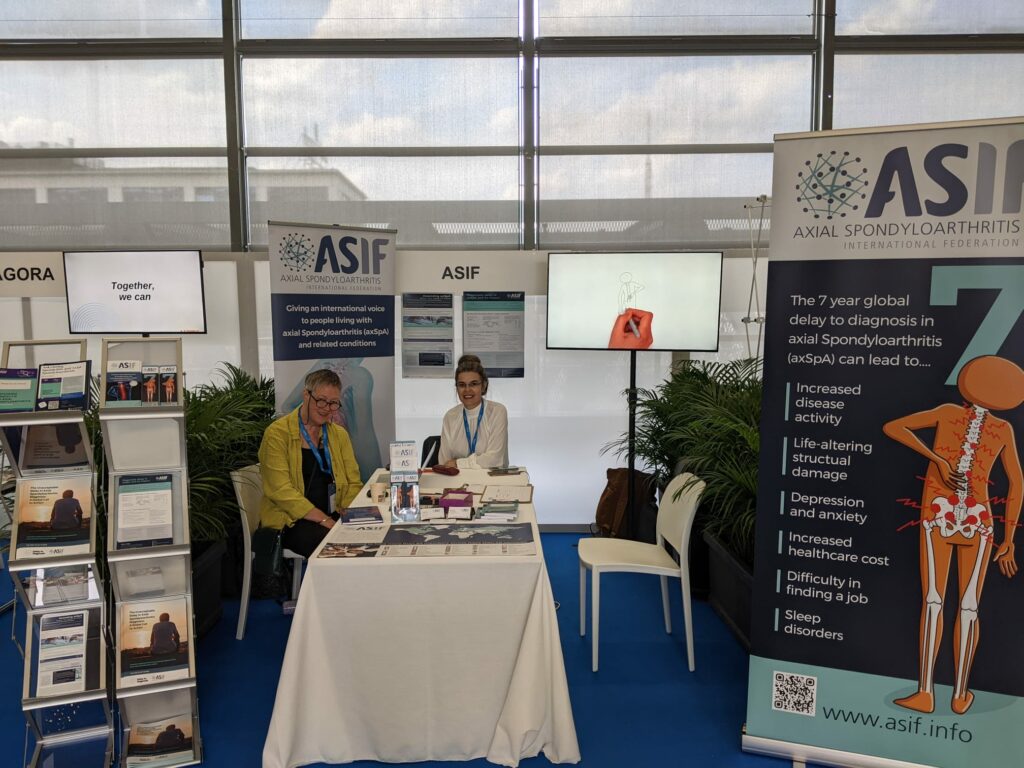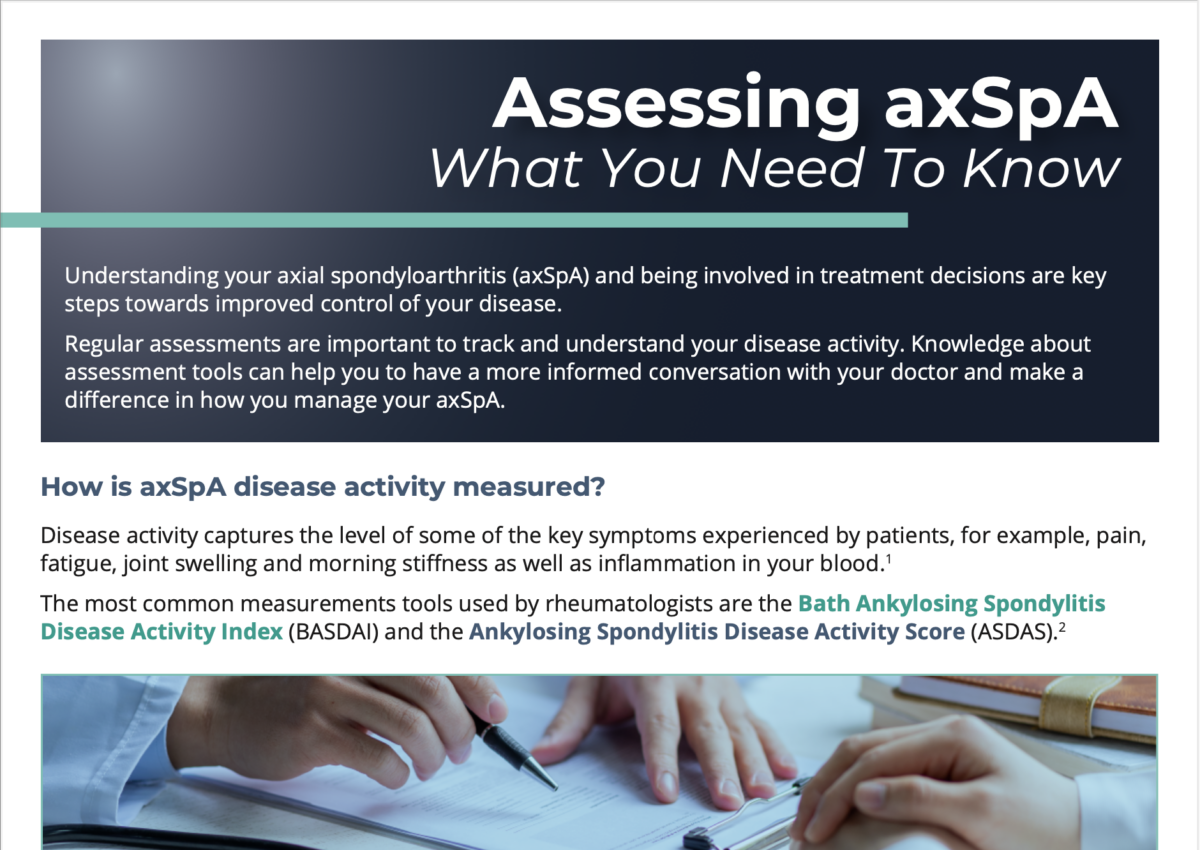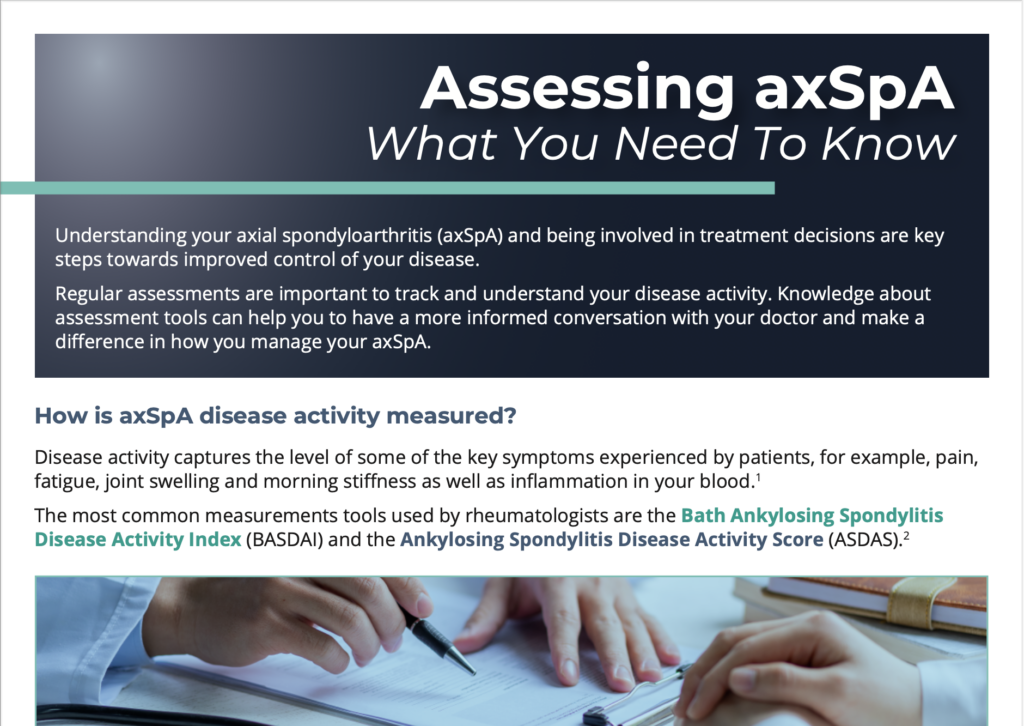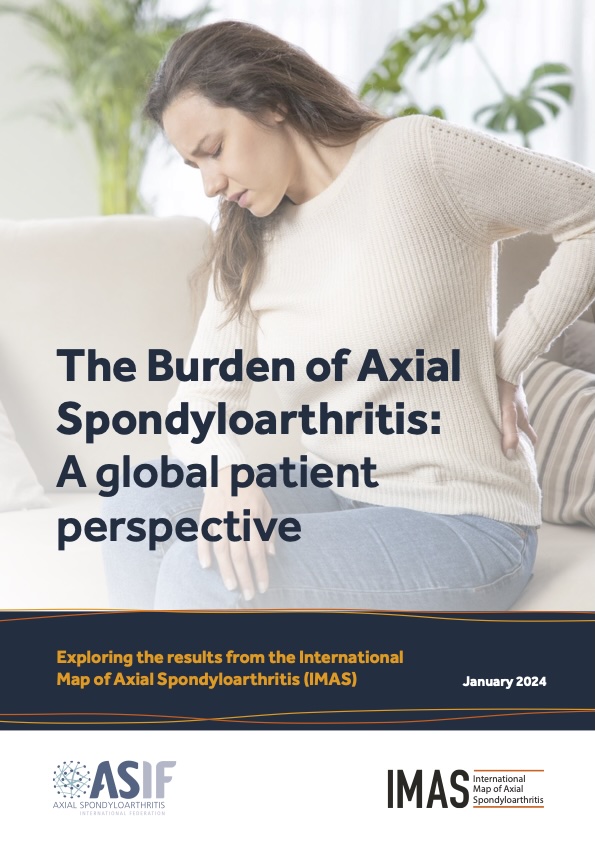It is becoming clearer that depression and anxiety are prominent among people living with axSpA
The European Map of Axial Spondyloarthritis (EMAS) and the International Map of Axial Spondyloarthritis (IMAS) describe how people living with axSpA experience their disease physically, psychologically and socially. Results show long diagnostic delays and a substantial physical and psychological burden, indicating important unmet needs for patients. Furthermore, axSpA can restrict their ability to participate in their daily routine and lead a productive work life. Understanding the patient’s perspective can improve both health outcomes and enhance shared decision-making between patients and rheumatologists.
The two most common comorbidities of axSpA are hypertension and depression. According to research, patients who exhibit symptoms in the depression-anxiety cluster and/or fibromyalgia-IBS cluster report poorer health and increased axSpA severity. Sleep disorders, anxiety and depression are common among patients and is associated with higher disease activity and functional impairment. But one more question arises when looking at the interconnection between the two. Does depression also impact treatment outcomes? Can there be a connection between treatment and depressive symptoms? And to what extent?

US patients with axSpA in the IMAS study, reported psychological distress and impaired function. Those participants also reported delays in diagnosis – with most of the delays reported by women. It is becoming clearer that depression and anxiety are prominent among people living with axSpA. This is why healthcare professionals should be screening for them in addition to disease activity, level and localisation of pain.
Chronic diseases can impact personal relationships
It is likely that chronic disease with such a broad impact on daily living would also impact interpersonal relationships. Partners are often a main source of support, and they can also be affected by the chronic disease and experience emotional distress themselves. The impact of axSpA on partner relationships is yet to be further researched. A UK study used telephone interviews from people cohabiting with their partner who lives with axSpA. The findings illustrated how living with the disease can influence closeness between partners and dominate daily decisions, particularly surrounding leisure activities. Partners commonly adopted a carer-type role, despite many individuals with axSpA expressing desire for a greater sense of autonomy. This was a unique insight into the lived experiences of both individuals with axSpA and their partners. Findings highlighted the social context of managing a long-term condition and suggested the need for including partners within consultations, and the need for support provision for partners.
Sexual quality of life may be considered a topic lower in the research priorities or in a patient’s life concerns. But this is not the case. There is an ongoing discussion about the relationship between demographics, disease-related variables, treatment, and sexual quality of life (SQOL) in men and women with axSpA. Data suggest that inflammation in patients with axSpA, even in the biologic treatment era, reduces sexual quality of life. On a more specific aspect of sexual quality of life, researchers explored the impact of ankylosing spondylitis (AS) on the sexual relationships of a large cohort of patients across the UK on a total of 1000 patients. They found that AS has a substantial impact on patients’ sexual relationships. One significant finding was that management of AS and its impact on sexual relationships should be directed not only towards physical outcomes such as disease activity and physical function, but also take into consideration the psychological state of the patient.

While reading about the psychological burden of axSpA on the daily lives of patients one can see the link between disease activity, and/or severity, functional limitations, and the presence of mental health issues. The underlying mechanism of disease activity includes chronic pain which cannot be overlooked when discussing the burden of this disease.
Chronic pain leads to a vicious cycle where dysfunctional cognitive schemas (thoughts, core beliefs) and behaviours (attitudes) are used to manage and deal with pain in the activities of daily living (ADL). The basic barriers of managing chronic pain are catastrophizing and fear/avoidance behaviours. When a patient is catastrophizing, basically focusing on thoughts and/or reactions that ‘magnify’ the experience of pain there is an increased likelihood of experiencing depressive and/or anxiety symptoms, greater functional difficulty, or disability. In those cases, patients experience lower quality of life, lower levels of perceived control over pain, lower emotional and social functioning, and poorer response to pharmacological treatments. All these make pain management more difficult. Catastrophizing precedes fear and avoidance behaviours towards pain. In this state, patients are faced with a fear of further injury or the possibility of worsening the medical condition, an increased sense (self-report) of pain and disability, and tend to adopt passive or avoidant strategies and behaviours towards pain.
Interventions

Some well-known interventions to manage the psychological burden of axSpA are Cognitive Behavioural Therapy (CBT) that targets dysfunctional thoughts and behaviours towards pain and functional limitations. Acceptance and Commitment Therapy (ACT) is based on the psychological flexibility model and focuses on acceptance of pain and disability and all related thoughts. Operant-Behavioural Therapy focuses on eliminating dysfunctional behaviours and adopting adaptive responses to pain and disability. Changes occur through the reinforcement (positive or negative) of the links between the ‘threat’ of pain and the physical response
Another intervention is mindfulness-based stress reduction that focuses on teaching self-management through meditation and the practice of daily mindfulness. This aims to increase the patient’s awareness of their body state (e.g. muscle tone, breathing) and, at the same time, develop mindfulness activities. These are some of the available interventions focused on helping patients to be more self-aware and empowered to manage their disease and the burden of it on the activities of their daily living.
Patient organisations can play a vital role in providing support to people living with axSpA
Many patient organisations focus on the empowerment of patients, education and support. This is outlined in the European Patient’s Forum Value of Patient Organisations where it’s stated that “the role patient organisations play in the area of peer support consists of providing knowledge, sharing experiences, and offering emotional, social or practical help to individual patients. It can take several forms such as mentoring, counselling or listening.”

Α feasibility study for developing, implementing and evaluating a peer support intervention for people who were newly diagnosed with early inflammatory arthritis (EIA) showed that early peer support was feasible and well received by both mentors and mentees. In another project, called the iPeer2Peer Program showed that peer support can positively influence the patients’ experiences with a chronic disease. Counselling, peer support and mentorship are important services that patient organisations can provide to their members. Support to members can vary from one organisation to another and from one country to another.
Best practices can be shared and resources and experience from organisations which have already implemented peer support and counselling is of high importance. Psychological support through face-to-face interactions, via group sessions or by using social media platforms should always follow guidelines and be delivered by trained professionals and/or supervised volunteers. Mentors or peer counsellors are often impactful for patients living with a chronic disease given that they can share words of encouragement and support with the unique perspective of the lived experience. In principle, organisations that do not already have experience with offering such support to their members can always network with others that do and share and exchange knowledge and best practices.
Patients living with axSpA manage the difficult realities of a chronic disease, the impact of the diagnostic delays, and medication and treatments, as well as the psychological burden of the disease. Patient organisations can play a vital role in providing support to people living with axSpA.

Nadia Maliou is a MSc Cognitive Psychologist, Vice President of the Hellenic League Against Rheumatism ELEANA, Vice President of the Federation Rare Diseases Greece and a Board Member of Pain Alliance Europe.
References
AC, S., Chou, R., JR, D., JA, T., JL, F., SD, R., … AJR, F. (2018). Noninvasive Nonpharmacological Treatment for Chronic Pain: A Systematic Review. AHRQ Comparative Effectiveness Reviews, (209). Retrieved from http://www.epistemonikos.org/documents/68151816424e336a355e76730dba9d18b9cdaef6
Berg, K. H., Rohde, G. E., Prøven, A., Benestad, E. E. P., Østensen, M., & Haugeberg, G. (2019). Sexual quality of life in patients with axial spondyloarthritis in the biologic treatment era. Journal of Rheumatology, 46(9), 1075–1083. https://doi.org/10.3899/jrheum.180413
Garrido-Cumbrera, M., Gálvez-Ruiz, D., Delgado-Domínguez, C. J., Poddubnyy, D., Navarro-Compán, V., Christen, L., … Bundy, C. (2021). Impact of axial spondyloarthritis on mental health in Europe: Results from the EMAS study. RMD Open, 7(3), 1–7. https://doi.org/10.1136/rmdopen-2021-001769
Garrido-Cumbrera, M., Navarro-Compán, V., Webb, D., Jacklin, C., Irwin, S., Christen, L., … Marzo-Ortega, H. (2021). P075 Evaluation of the impact of the COVID-19 pandemic on patients with rheumatic diseases in the UK: results from the REUMAVID study. Rheumatology, 60(Supplement_1), 1–9. https://doi.org/10.1093/rheumatology/keab247.073
Healey, E. L., Haywood, K. L., Jordan, K. P., Garratt, A. M., Ryan, S., & Packham, J. C. (2009). Ankylosing spondylitis and its impact on sexual relationships. Rheumatology (Oxford, England), 48(11), 1378–1381. https://doi.org/10.1093/rheumatology/kep143
Lynch, M. E., Campbell, F., Clark, A. J., Dunbar, M. J., Goldstein, D., Peng, P., … Tupper, H. (2008). A systematic review of the effect of waiting for treatment for chronic pain. Pain, 136(1–2), 97–116. https://doi.org/10.1016/j.pain.2007.06.018
Magrey, M., Walsh, J. A., Flierl, S., Howard, R. A., Calheiros, R. C., Wei, D., & Khan, M. A. (2023). The International Map of Axial Spondyloarthritis Survey: A US Patient Perspective on Diagnosis and Burden of Disease. ACR Open Rheumatology, 5(5), 264–276. https://doi.org/10.1002/acr2.11543
Martindale, J., Shukla, R., & Goodacre, J. (2015). The impact of ankylosing spondylitis/axial spondyloarthritis on work productivity. Best Practice and Research: Clinical Rheumatology, 29(3), 512–523. https://doi.org/10.1016/j.berh.2015.04.002
Otón, T., Sastre, C., & Carmona, L. (2021). The journey of the non-radiographic axial spondyloarthritis patient: the perspective of professionals and patients. Clinical Rheumatology, 40(2), 591–600. https://doi.org/10.1007/s10067-020-05269-z
Raybone, K., Family, H., Sengupta, R., & Jordan, A. (2019). (Un)Spoken realities of living with axial spondyloarthritis:A qualitative study focused on couple experiences. BMJ Open, 9(7), 1–8. https://doi.org/10.1136/bmjopen-2018-025261
Reddy, K. N., Sabu, N., Pandey, N., Raut, A., Joag, K., & Patil, P. (2022). Anxiety and depression among patients with axial spondyloarthritis. Anatolian Journal of Cardiology, 9(1), 8–13. https://doi.org/10.5152/eurjrheum.2021.21022
Roditi, D., & Robinson, M. E. (2011). The role of psychological interventions in the management of patients with chronic pain. Psychology Research and Behavior Management, 4, 41–49. https://doi.org/10.2147/PRBM.S15375
Sandhu, S., Veinot, P., Embuldeniya, G., Brooks, S., Sale, J., Huang, S., … Bell, M. J. (2013). Peer-to-peer mentoring for individuals with early inflammatory arthritis: Feasibility pilot. BMJ Open, 3(3), 1–9. https://doi.org/10.1136/bmjopen-2012-002267
Sienkiewicz, D., & Van Lingen, C. (2017). The added value of patient organisations. European Patients Forum, 1–36. Retrieved from https://www.eu-patient.eu/globalassets/library/publications/epf_added_value_report_final.pdf
Slouma, M., Bouzid, S., Kharrat, L., Tezeghdenti, A., Ghazouani, E., Metoui, L., … Louzir, B. (2023). Ab0995 Assessment of Matrix Metalloproteinase-3 in Spondyloarthritis: Correlation With Disease Activity. Annals of the Rheumatic Diseases, 82(Suppl 1), 1718.2-1719. https://doi.org/10.1136/annrheumdis-2023-eular.5633
Sturgeon, J. A. (2014). Psychological therapies for the management of chronic pain. Psychology Research and Behavior Management, 7, 115–124. https://doi.org/10.2147/PRBM.S44762
Veehof, M. M., Oskam, M. J., Schreurs, K. M. G., & Bohlmeijer, E. T. (2011). Acceptance-based interventions for the treatment of chronic pain: A systematic review and meta-analysis. Pain, 152(3), 533–542. https://doi.org/10.1016/j.pain.2010.11.002
Wilson, N., Liu, J., Adamjee, Q., Di Giorgio, S., & Lempp, H. (2022). P250 The emotional impact of axial spondyloarthritis: a systematic review and thematic synthesis of qualitative studies and a review of online fora. Rheumatology, 61, Suppl 1, keac133.249. https://doi.org/10.1093/rheumatology/keac133.249
Zhao, P., Yoo, I., Lancey, R., & Varghese, E. (2019). Mobile applications for pain management: An app analysis for clinical usage. BMC Medical Informatics and Decision Making, 19(1), 1–10. https://doi.org/10.1186/s12911-019-0827-7
Zhao, S. S., Radner, H., Siebert, S., Duffield, S. J., Thong, D., Hughes, D. M., … Goodson, N. J. (2019). Comorbidity burden in axial spondyloarthritis: A cluster analysis. Rheumatology (United Kingdom), 58(10), 1746–1754. https://doi.org/10.1093/rheumatology/kez119
